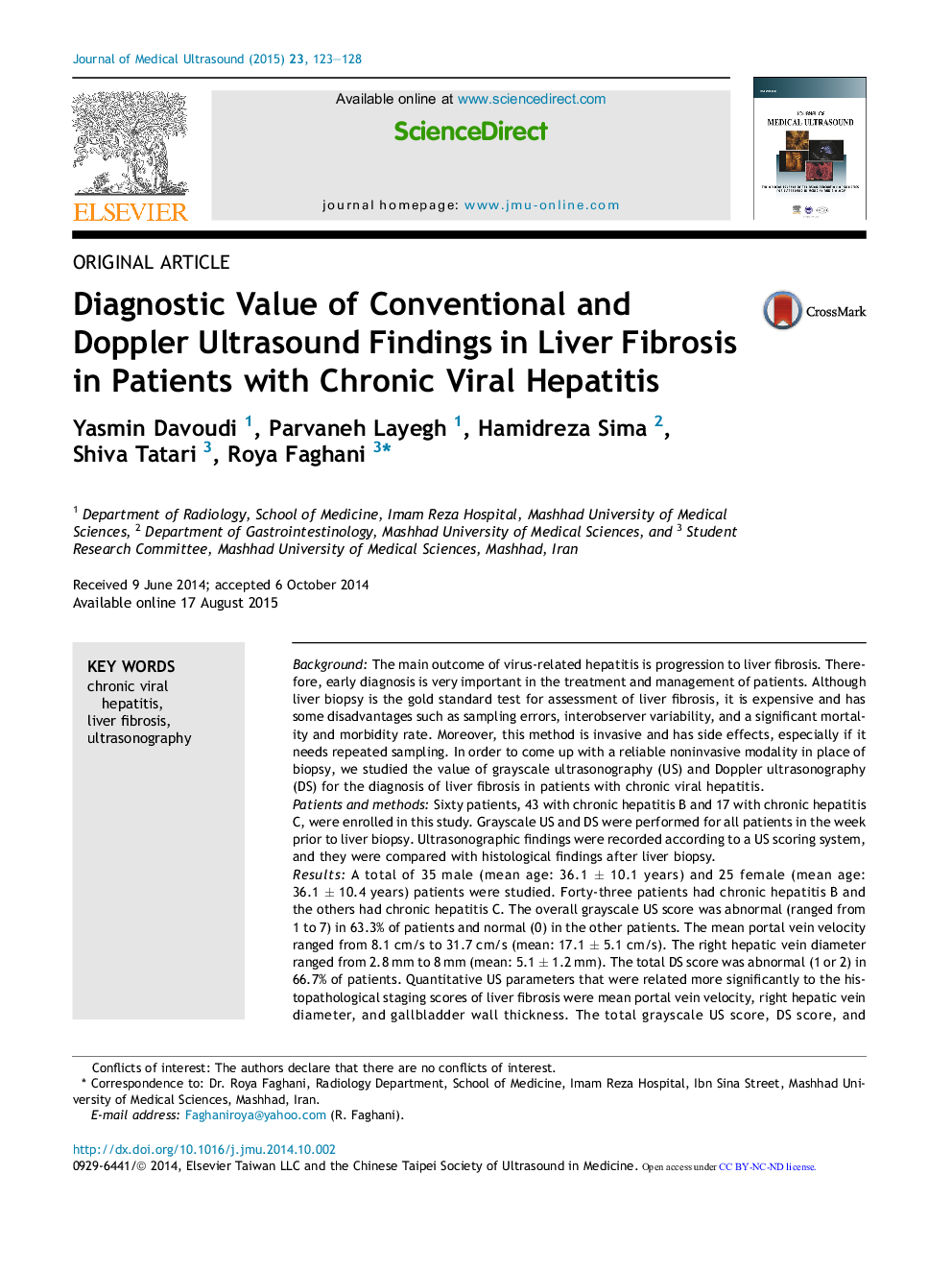| Article ID | Journal | Published Year | Pages | File Type |
|---|---|---|---|---|
| 4232966 | Journal of Medical Ultrasound | 2015 | 6 Pages |
BackgroundThe main outcome of virus-related hepatitis is progression to liver fibrosis. Therefore, early diagnosis is very important in the treatment and management of patients. Although liver biopsy is the gold standard test for assessment of liver fibrosis, it is expensive and has some disadvantages such as sampling errors, interobserver variability, and a significant mortality and morbidity rate. Moreover, this method is invasive and has side effects, especially if it needs repeated sampling. In order to come up with a reliable noninvasive modality in place of biopsy, we studied the value of grayscale ultrasonography (US) and Doppler ultrasonography (DS) for the diagnosis of liver fibrosis in patients with chronic viral hepatitis.Patients and methodsSixty patients, 43 with chronic hepatitis B and 17 with chronic hepatitis C, were enrolled in this study. Grayscale US and DS were performed for all patients in the week prior to liver biopsy. Ultrasonographic findings were recorded according to a US scoring system, and they were compared with histological findings after liver biopsy.ResultsA total of 35 male (mean age: 36.1 ± 10.1 years) and 25 female (mean age: 36.1 ± 10.4 years) patients were studied. Forty-three patients had chronic hepatitis B and the others had chronic hepatitis C. The overall grayscale US score was abnormal (ranged from 1 to 7) in 63.3% of patients and normal (0) in the other patients. The mean portal vein velocity ranged from 8.1 cm/s to 31.7 cm/s (mean: 17.1 ± 5.1 cm/s). The right hepatic vein diameter ranged from 2.8 mm to 8 mm (mean: 5.1 ± 1.2 mm). The total DS score was abnormal (1 or 2) in 66.7% of patients. Quantitative US parameters that were related more significantly to the histopathological staging scores of liver fibrosis were mean portal vein velocity, right hepatic vein diameter, and gallbladder wall thickness. The total grayscale US score, DS score, and accumulation of US and DS scores (US–DS score) were significantly different between patients with liver fibrosis and those without fibrosis (p = 0.03, p = 0.03, and p < 0.001, respectively). We found that the total grayscale US score, DS score, and US–DS score are significantly correlated with liver fibrosis stages.ConclusionBased on these findings, one can conclude that US may be an accurate, noninvasive alternative modality for the diagnosis of liver fibrosis, with fewer side effects than biopsy. It may be especially useful for repetitive follow-up of patients.
